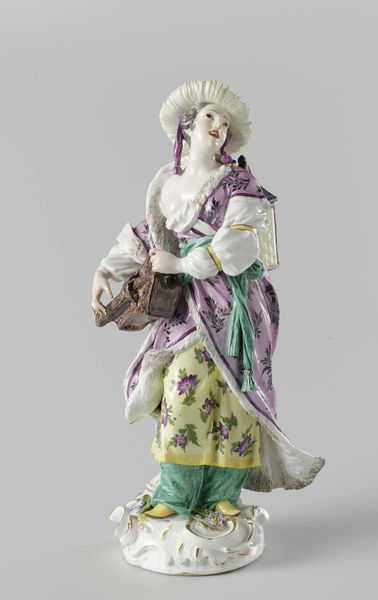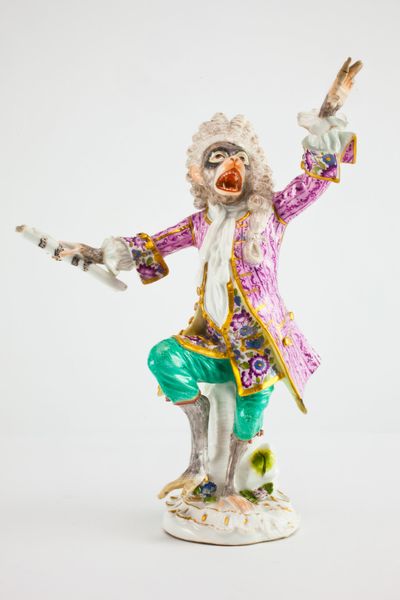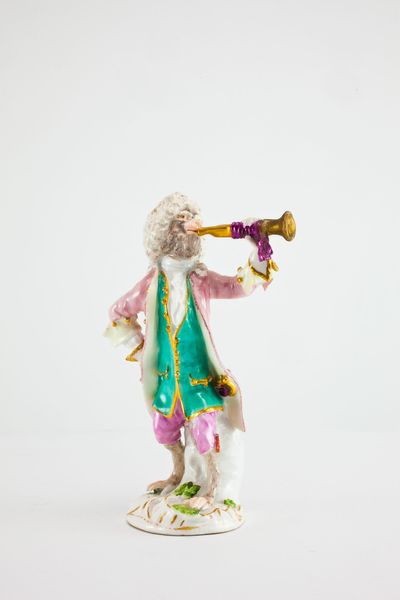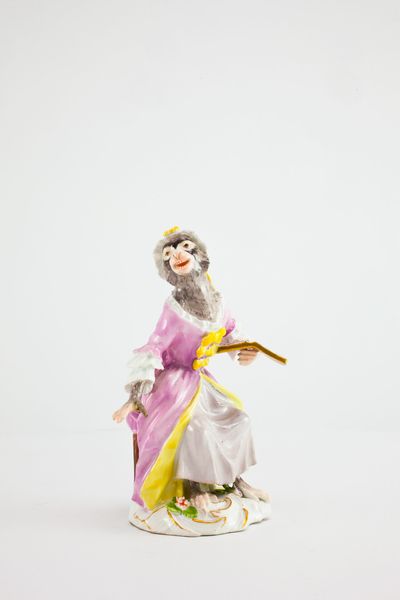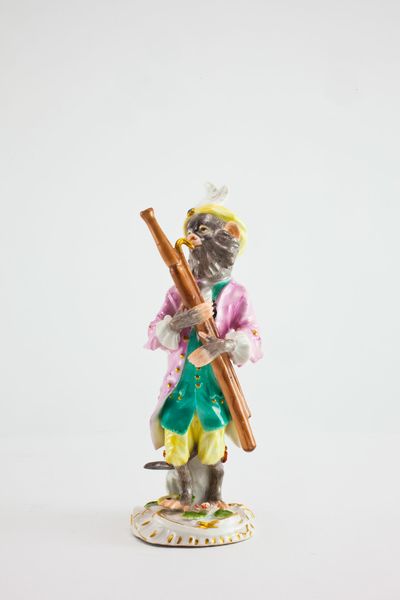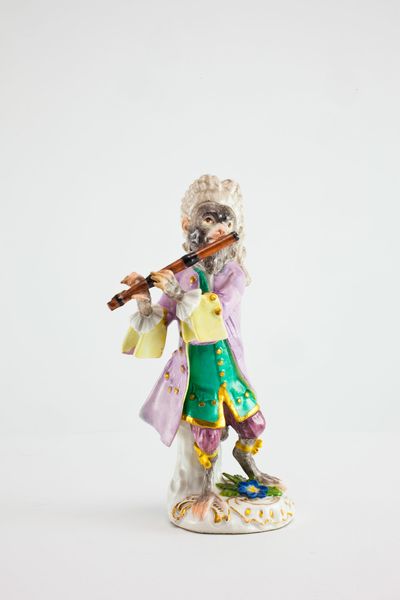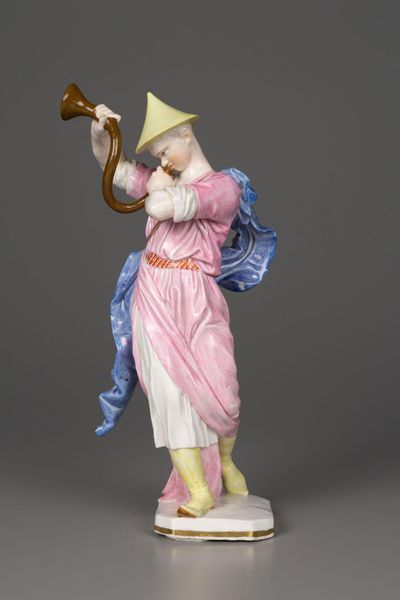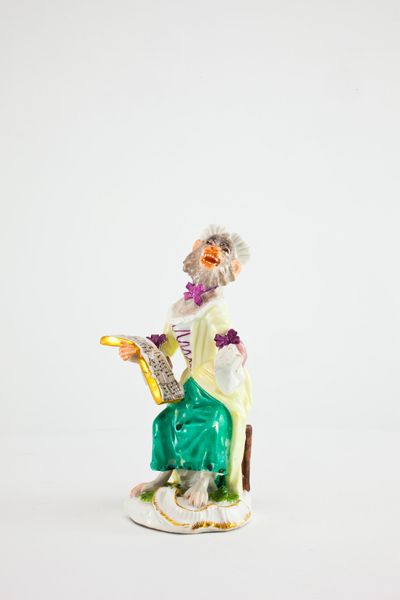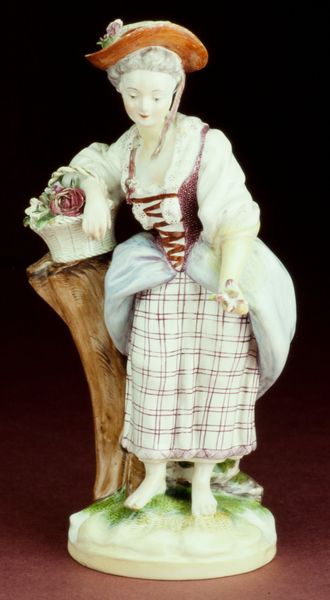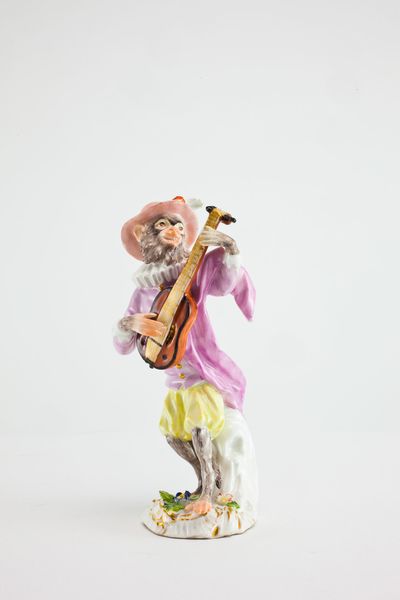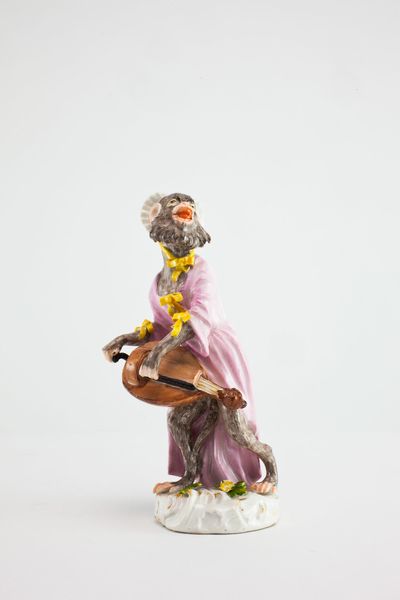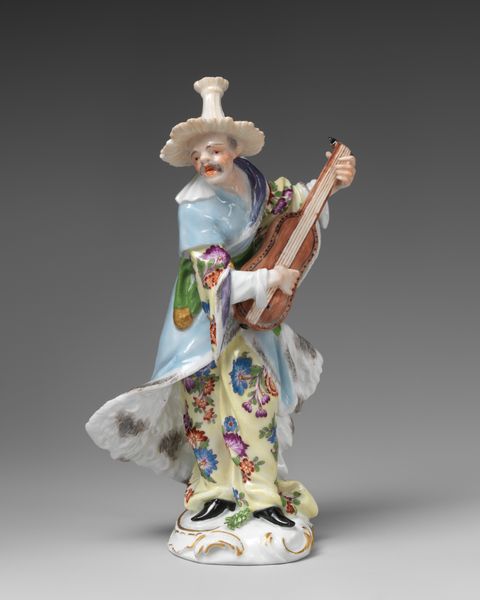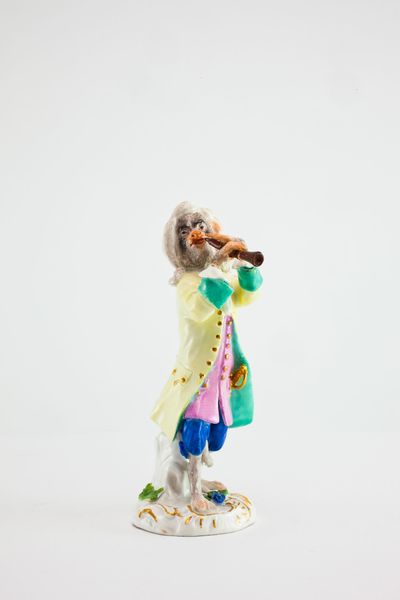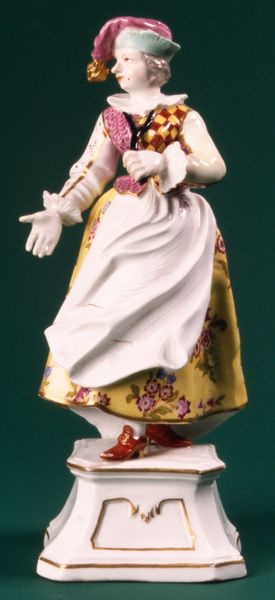
#
3d printed part
#
fashion mockup
#
child design
#
jewelry design
#
wearable design
#
bubble style
#
designed for kid
#
nostalgic styling
#
cartoon carciture
#
bridal fashion
Dimensions: height 40.6 cm, width 17.3 cm, depth 16.6 cm, height 32.3 cm
Copyright: Rijks Museum: Open Domain
Editor: So, this is "Pair of Malabars," a porcelain figure made around 1748-1749. It strikes me as a very performative piece – like it’s intended to project a certain image of the exotic. What exactly is that image? Curator: Good question. We see these "chinoiserie" figures circulating widely throughout Europe, reflecting not authentic cultural understanding but rather European fantasies and colonial ambitions. This object, like many others, participates in a dynamic where the West constructs the East. Editor: So, it’s not necessarily about an accurate representation? Curator: Not at all. Instead, consider how this particular depiction might serve to reinforce existing power structures. Note the detail – not just capturing likeness, but defining a persona. What does that reveal? Editor: It looks like the figure is wearing a caricature of what might be seen as ‘Asian’ clothing. It’s not about understanding, it’s more about appropriation, even mockery? And the display of porcelain itself, that's meant to demonstrate wealth and influence, isn’t it? Curator: Precisely. It highlights the way exoticism and wealth were intertwined. European powers showcased porcelain – a material from Asia – in forms *representing* Asians to reinforce colonial narratives. The act of displaying becomes an assertion of dominance. Editor: Wow, I hadn't considered how deeply the display itself contributed to that power dynamic. Thank you, this was a great deep dive! Curator: My pleasure. Understanding these historical contexts adds valuable insights and invites further discussions.
Comments
rijksmuseum about 2 years ago
⋮
These exotic figures are meant to portray inhabitants of Malabar, a coastal region in India. The Malabars were visited and described by various explorers. In 18th-century Europe they acquired near-mythical status. The statuettes are sheer fantasy: the figures wear a mixture of exotic robes, hats, and accessories.
Join the conversation
Join millions of artists and users on Artera today and experience the ultimate creative platform.
